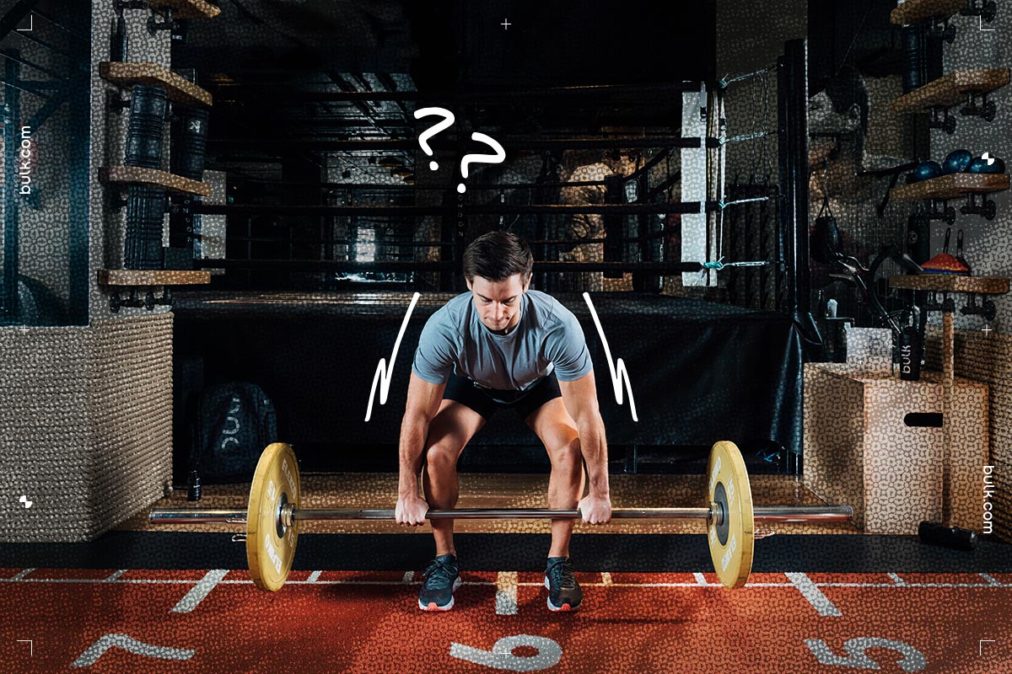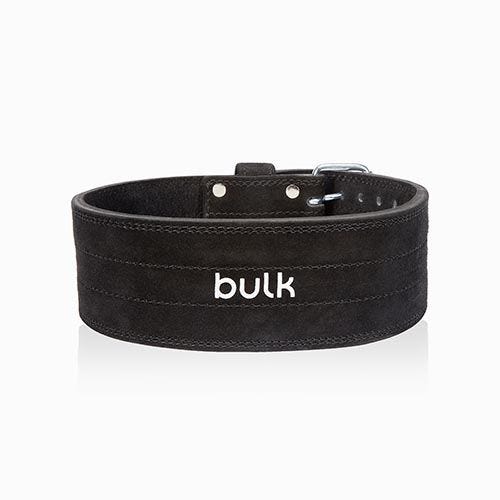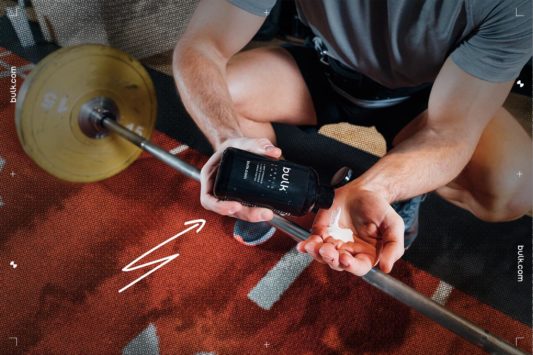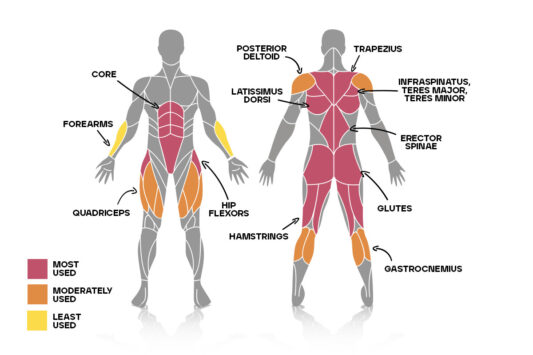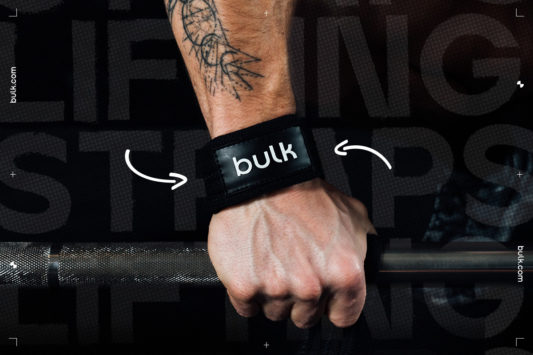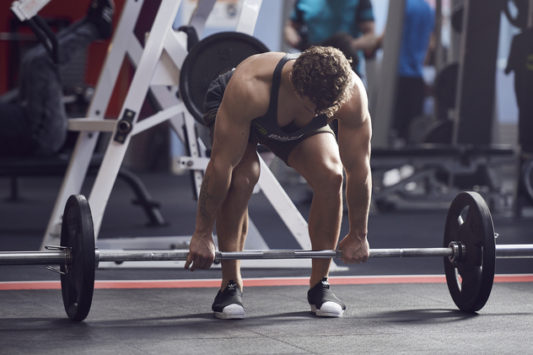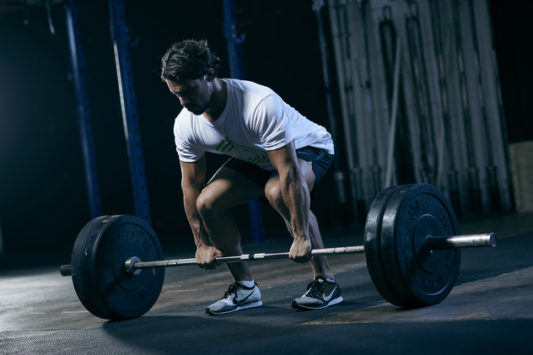There are no shortages of deadlift variations. From stiff-leg to paused, sumo to conventional, the list is exhaustive. Each of them serves a different purpose. The Romanian deadlift has seen a growth in popularity, appearing on a variety of programmes with both muscle growth and strength in mind. But how does it differ from a traditional deadlift? Find out here. It’s Romanian deadlift vs deadlift.
Before we go into more detail on each of the lifts, here is a quick summary of the key differences between a Romanian deadlift and a deadlift.
Difference between a Romanian deadlift vs deadlift
- RDLs are essentially conventional deadlifts done in reverse, without the bar or plates touching the floor.
- Deadlifts tend to have a heavier load and incorporate more of the quadricep muscles in the bottom portion of the lift. This is because you are encouraged to bend the knees and explode upwards.
- RDLs are an accessory for the deadlift.
What is a Romanian deadlift?
The Romanian deadlift (RDL) is a barbell lift used to develop the strength of the posterior chain muscles, including the erector spinae, gluteus maximus, hamstrings and adductors. When done correctly, the RDL is an effective exercise that helps strengthen both the core and the lower body with one move.
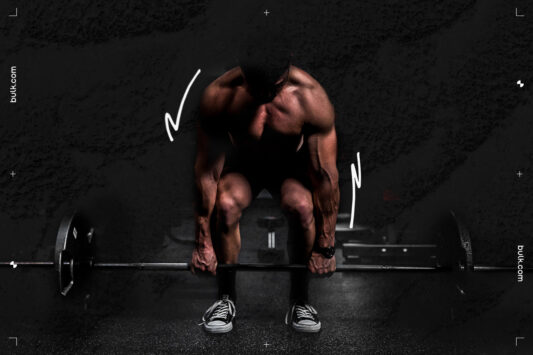
How to do a Romanian deadlift
- Load the bar up.
- Stand with a roughly shoulder-width stance with your feet pointed out (about 10 degrees).
- Grip the bar with your arms just inside the width of your legs. If the load is heavy, you may want to use Lifting Straps.
- Ensure the bar is directly over the middle of your foot – it should stay there for the entirety of the vertical lift.
- Before initiating the negative lift, brace by lifting your chest and stomach up. This will help get your spine in the optimal position. Maintain this spinal position throughout the lift.
- Begin the negative by pushing your hips back. Visualising pushing your hips back is better than ‘lowering the bar’ because it helps keep your body in the ideal position.
- During the negative, keep your shins vertical.
- A slight bend in the knees is a good thing, but be careful not to overdo it. You don’t want your knees to travel forward like they would in a squat.
- Only lower the bae to the point where you can maximally set your hips back. This is to avoid your lower back moving position – either go around or forward.
- The bar should reach just below knee-level, or mid-shin. The plates should not be hitting the floor.
- Once you maximise your range of motion, reverse the motion by pushing your hips forward and lifting your chest up.
- The bar should finish in your natural lock-out position.
- Repeat the rep.
- If you’re using the RDL as a deadlift accessory, it’s a good idea to be more aggressive with the reverse motion, pushing your hips forward and clenching the glutes at the top.
What do Romanian deadlifts work?
RDLs develop the strength of the posterior chain muscles, including the erector spinae, glutes, hamstrings and adductors. It will also train the core. The RDL is an excellent accessory movement used to strengthen a lifter’s traditional deadlift.
Is a Romanian deadlift harder than a regular deadlift?
It depends on what you mean by ‘harder’. You can certainly lift more weight doing a conventional deadlift, since the full strength of your legs are more utilised in the latter. In RDLs, the bar does not touch the ground, meaning there’s more tension on your muscles for longer.
In terms of technique, they are very similar, so there’s not much difference in terms of difficulty there.
What is a conventional deadlift?
A deadlift is a compound exercise in which you pull a load, usually a barbell loaded with plates, and is lifted from the ground to the hips, with the knees fully locked out. In a conventional deadlift, the legs and feet are kept narrow, around shoulder width apart.
How to deadlift correctly
- Load up the barbell. About 500kg if you’re Eddie Hall, a little lighter if you’re not.
- Stand a touch narrower than shoulder-width apart, with the bar going straight through your midfoot. Your feet can be facing straight or toes out a little, whichever feels more comfortable.
- Without bending your knees (yet), drop your arms vertically until they touch the bar. You want your arms to be completely straight.
- Next, sink your hips and bend your legs so that your shin is touching the bar. While doing this, do not move the barbell.
- This movement should mean your knees are tucked into the insides of your elbows. If they are not touching, it’s likely your initial width was too far apart. Adjust until you are in the correct position.
- Now you’re crouched, it’s time to tighten up. To do this effectively, there are some cues to think about. The first is to grip the bar until you feel ‘heavy in your hands’. The other is to visualise lifting your chest up. This should get your hips and back in a position where it feels tight and solid. You should feel nice and tight, ready to explode off the floor.
- It’s time to lift. Rip the bar off the floor as powerfully as you can. A great cue for this is to imagine you’re doing a leg press, pushing the Earth against you below. In this pulling motion, your arms should only be acting as hooks.
- Lift the bar past the knees, pushing your hips forward, then lock your knees out. That’s a rep.
- Once locked out, lower the bar. But rather than just collapsing with the weight and bending your knees, tip the bar down with your knees only slightly bent, imagining your hip as a hinge. Once the bar passes the knees, sink down with your knees.
- Ensure the bar is ‘dead’ before you lift it again. Otherwise, it’s an ‘alive lift’, and those don’t count. (Terrible joke, sorry).
To learn how to increase your deadlift, see our guide.
What are deadlifts good for?
Number one, deadlifts are great fun. Once you nail down the technique and see the weight going up, it feels pretty great to see those big loads come off the floor.
But in terms of physical fitness, deadlifting increases core strength, stability and improves your posture. The deadlift trains pretty much every muscle in the legs, lower back and core. These are all muscles responsible for posture, which will help keep your shoulders, spine, and hips in positive alignment.
Essentially, it trains everything. If you walk into the gym with any kind of physical ailment, from your latissimus dorsi to your big toe, it’s going to hinder your deadlift. That says a lot about how much it does for you. As the king of compound lifts, increasing your Deadlift will see pretty much every other lift go up too – whether it be Bench Press, Squat or variations.
Frequently Asked Questions
Where does the Romanian deadlift name come from?
The Romanian deadlift was named after the Romanian weightlifter Nicu Vlad, an Olympic medalist. After training his clean and jerk, Vlad had been spotted performing these flat-backed deadlift-like exercises.
He was asked by a few other lifters what exactly the exercise he was doing was called, but he never named the movement. He only said that they did it because it made Nicu’s back strong for the clean. Later, other athletes and coaches started calling it a Romanian deadlift.
Are Romanian deadlifts safe?
Some people are worried about RDLs being unsafe for the back. This is a little unfounded. The Romanian deadlift is a hip-dominant movement, so when it’s performed correctly, direct loading on the back is minimal.
If you’re a beginner in this movement, ensure you use an easy load until you get a handle on the technique. If you don’t have a partner, try filming yourself from side-on to see the different angles of your leg and back. Never go too heavy until you’re confident with the movement.
Can you do a Romanian deadlift with dumbbells?
Yes, just treat the dumbbells in the same manner as a barbell. Lower dumbbells in front of shins, keeping them close to the body. Once the dumbbells pass the knees, do not allow the hips to sink further.
We believe in sharing, and we’d love to know what you think, so don’t forget to tag us when using Bulk™ products, whether it be protein powder or gym accessories. Check out @bulk for more recipes, ambassador workouts and tips. Join our community of fitness lovers and foodies by tagging #TeamBulk.
Related articles
Eager to learn more? We believe that every person, with support, has the right to transform their lives through fitness. That’s why we’ve put together hundreds of articles with expert advice, all to help you on your fitness journey.
